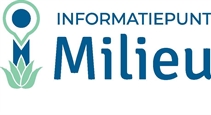Refuelling of vessels
When refuelling vessels, liquid fuels, such as diesel or petrol, may end up in the water. There are rules laying down conditions on how to prevent pollution of the water or how pollution can be reduced.
On this page:
Explanation of the activity
The delivery of fuel to vessels shall take place above water, from a shore delivery point. Due to spills and failure to act carefully, there is a chance that diesel or gasoline will enter the water.
Where to find the rules
The rules for refuelling vessels are set out in Articles 3.1.4 and 3.1.5 of the Arrangements and Activities BES.
Which rules apply
Expert staff
Refuelling of vessels may only be carried out by competent personnel. This means that unmanned refueling is not allowed. Expert personnel are staff at the marina who are aware of the hazardous properties of liquid fuels. Expert staff also know how to act in the event of an incident.
Dealing with spills
There must be sufficient resources to clean up water pollution. For example, absorption material or an oil tree. When there is a spill of diesel or petrol, these tools must be used to combat the contamination.
Filling gun and use of jerrycans
After refueling, the filling gun or end of the filling pipe is hung over a drip tray large enough to catch the diesel or gasoline contained in the filling pipe.
The refuelling system shall only be used for refuelling vessels and shall not be used to fill jerry cans or other vessels.
A fixed tank installation placed on the shore is equipped with a filling gun with an automatic exit mechanism that strikes when the fuel tank is full.
Checklist
- Are there sufficient absorption agents and other tools?
- Are staff trained to prevent and combat pollution?
- Does the delivery take place under the supervision of expert staff?
- Port regulations: is there a regulation in force in accordance with these rules?
